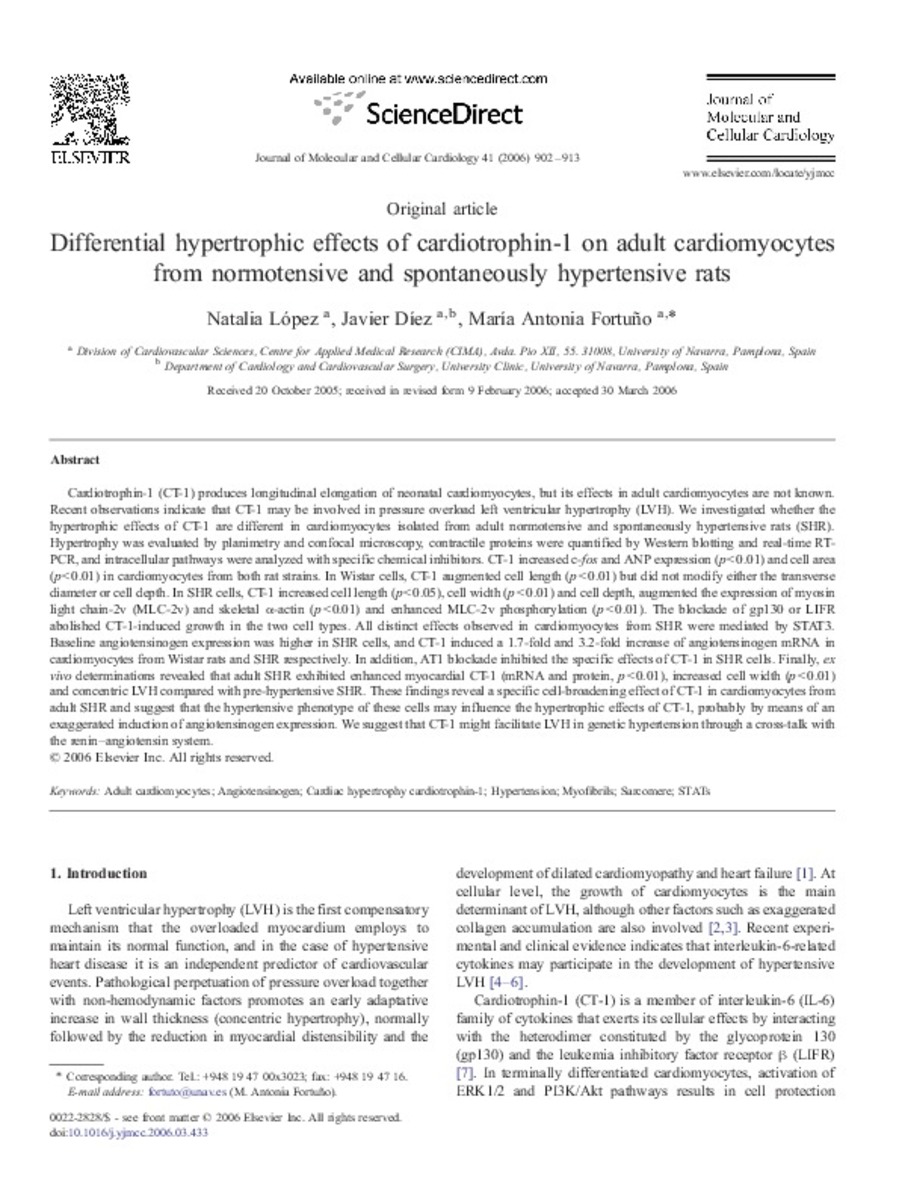Differential hypertrophic effects of cardiotrophin-1 on adult cardiomyocytes from normotensive and spontaneously hypertensive rats
Keywords:
Adult cardiomyocytes
Angiotensinogen
Cardiac hypertrophy cardiotrophin-1
Hypertension
Myofibrils
Sarcomere
STATs
Citation:
Lopez N, Diez J, Fortuno MA. Differential hypertrophic effects of cardiotrophin-1 on adult cardiomyocytes from normotensive and spontaneously hypertensive rats. J Mol Cell Cardiol 2006 Nov;41(5):902-913.
Statistics and impact
0 citas en

0 citas en

Items in Dadun are protected by copyright, with all rights reserved, unless otherwise indicated.










